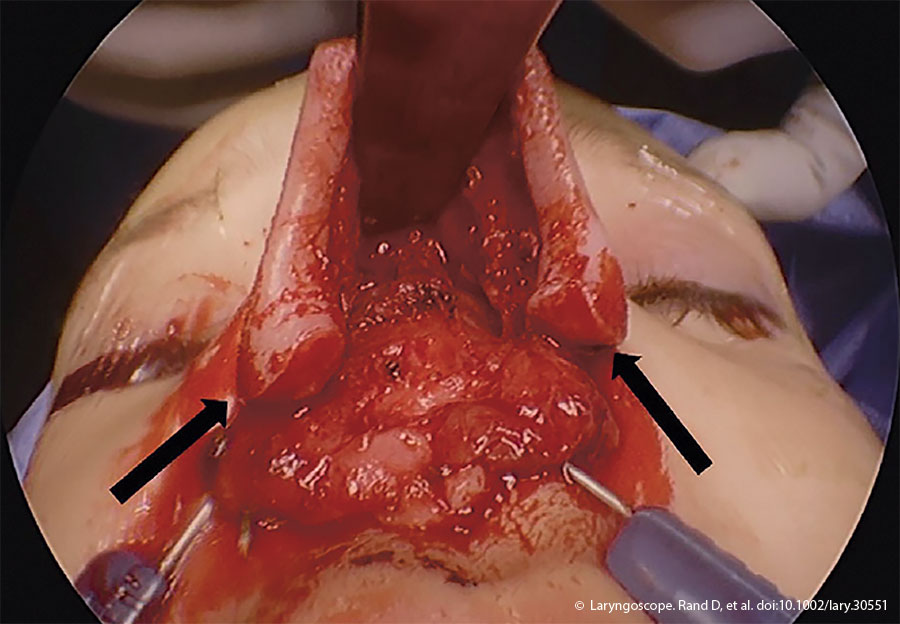
Figure 1. Intraoperative photograph demonstrating the exposure and the alar base extension of the external rhinoplasty incision (black arrows).
An external rhinoplasty approach with an inverted V incision at the mid portion of the columella and marginal incisions was made and extended into alar creases bilaterally. The nasal soft tissue envelope was elevated in a sub-perichondrial plane, and dissection continued over bilateral nasal domes into the lower lateral cartilages. After bisecting the Pitanguay’s ligament, bilateral upper and lateral cartilages were dissected. The incisions were further extended into the alar bases, improving exposure of the nasal dorsum and allowing future access to the anterior skull base (Figure 1). The periosteum was sharply incised over the nasal bones, and a Cottle’s elevator was used to dissect to the radix in a sub-periosteal plane. The dermoid cyst was subsequently dissected from the surrounding soft tissue. A small elliptical excision was required to remove the nasal tip portion of the cyst. Otherwise, the mucosal envelope of the nose was not violated. After transecting the interdomal ligament, bilateral submucoperichondrial flaps were raised from the caudal edges of the nasal septum to the perpendicular plate of the ethmoid bone. The dermoid sinus tract was followed cranially and involved the dorsal septum, which necessitated amputation of the tract and removal of a portion of the quadrilateral cartilage to continue dissection cranially.
Explore This Issue
March 2023Medial and lateral osteotomies were performed with a 3-mm osteotome to remove the left lateral nasal bone, which was placed in saline and set aside. The dermoid sinus tract continued superiorly to the frontal beak and anterior cranial fossa. The nasal dorsum was retracted superiorly to visualize the anterior skull base. The intracranial dissection was achieved by neurosurgery under image guidance. The frontal beak was reduced endoscopically using an ultrasonic bone aspirator. The dermoid cyst was freed from the underlying dura using a combination of sharp and blunt instruments. Complete excision of the cyst was confirmed by visual inspection. The skull base defect was repaired using DuraGen, a resorb X plate, and fibrin sealant. A resorbable plate was used rather than other methods of skull base reconstruction, such as tissue flaps or free grafts, to improve operative efficiency. Nasal reconstruction was achieved. The left nasal bone was replaced in situ and sutured to the piriform aperture and right nasal bone with 3–0 Vicryl sutures. A columellar strut graft fashioned from a piece of conchal cartilage provided tip support. The nasal tip was reapproximated with interdomal sutures with 5–0 PDS suture.
Closure of remaining skin and soft tissue layers was achieved with 4–0 Monocryl sutures reapproximating the dermis and 5–0 fast gut sutures the epidermis. Marginal incisions were closed with 5–0 chromic gut sutures, and the elliptical nasal tip incision was closed with 5–0 fast plain gut chromic sutures. Appropriate dressings were applied. To reduce intracranial pressure postoperatively, a lumbar drain was placed.
RESULTS
Postoperatively, the patient was transferred to the pediatric intensive care unit for monitoring and received perioperative antibiotics. The lumbar drain was removed on postoperative day six. A six-month follow-up showed complete healing, a favorable cosmetic result, and no recurrence on MRI.